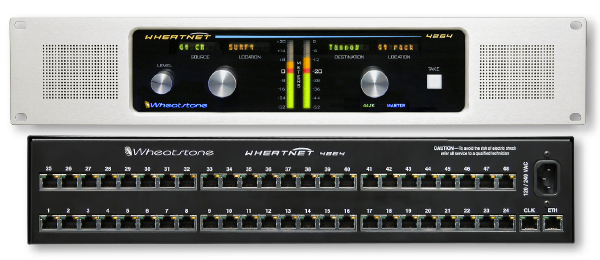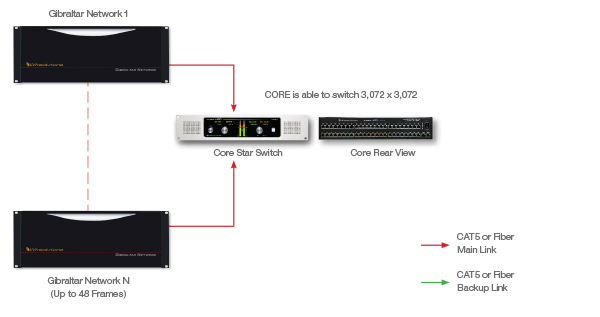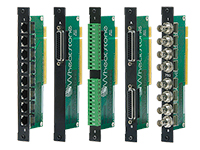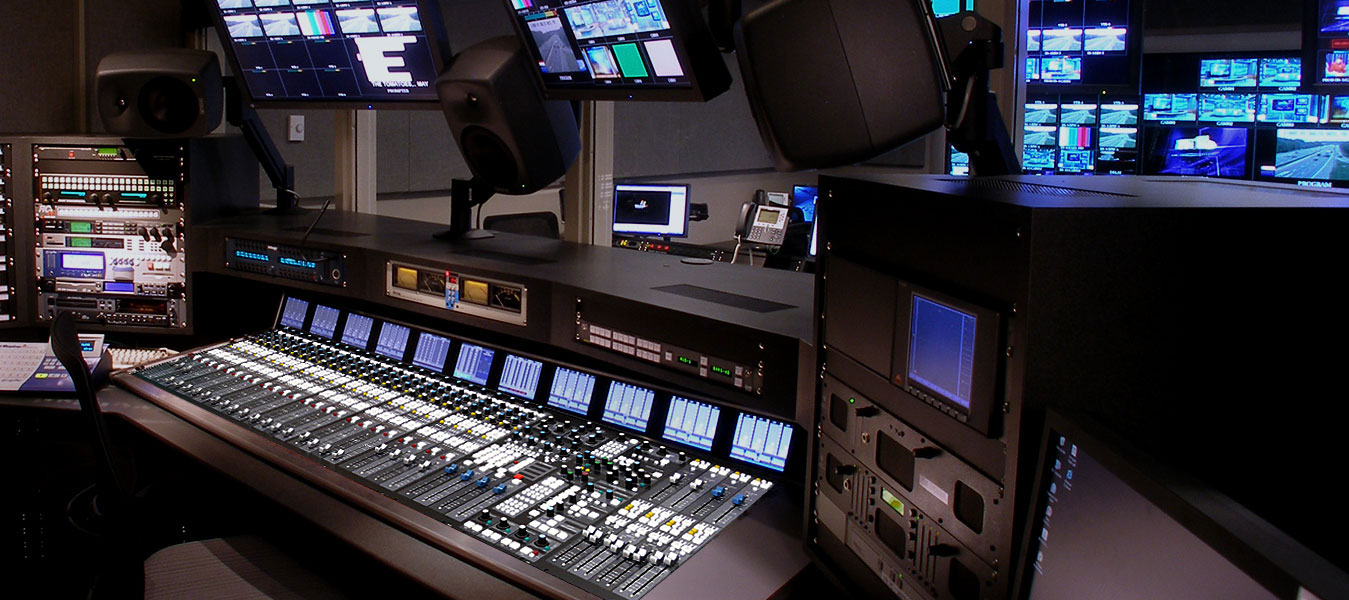
GIBRALTAR: Rock Solid Performance & Routing
More ultra-professional installations are done in broadcast television using Wheatstone’s Gibraltar system than any other. And with good reason. It has pioneered absolutely rock-solid operation with minimum fuss with maximum mixing capabilities. And it’s the most prolific network out there, giving you control over every aspect of your networked audio.
Gibraltar® is the powerplant of Wheatstone’s consoles. Its modular design uses multiple Gibraltar DSP cards to provide the mixing, bussing, I/O, and processing power which the control surface presents to the operator. The amount of DSP processing available can be scaled to the size and complexity of the intended installation and to allow for future expansion.
Each has internal, modular power supplies and room for a second for full power redundancy. A “hot standby” Gibraltar DSP card can also be installed and will seamlessly take over the functions of any failed DSP card.
More than enough DSP to do the job
There are 1,024 channels of processing available. Sound like a lot? It is! For a modern studio, consider that for every input you’ll need a minimum of 6 channels of processing for 5.1 surround as well as 2 channels for stereo processing. Add to that processing for all major output and monitor busses (stereo and surround mains, submixes, aux sends, mix-minus, tracks, control room, studios and headphone feeds) and you’ll see that it adds up to a lot.
Extreme flexibility
With over 10,000 audio input sources simultaneously available on the network, you’ll never have to repurpose your inputs again. This kind of unrestricted access means your throughput is greatly streamlined AND your flexibility options are SIGNIFICANTLY increased.
No blockouts
Of course having a ton of simultaneous inputs for a single production is not an everyday occurrence, but since you have completely unrestricted integrated router flexibility, having all faders available to dial up whatever mix you need means the days of having to block out channels based on input type are a thing of the past.
Given the technology we have today, and considering what’s on the horizon, it only made sense to take a completely modular approach. This provides us with the ability to create incredibly powerful devices with unimaginably small footprints. Wheatstone ensures that your investment in our technology today will last well into the future. In other words: Wheatstone = incredible ROI.
Gibraltar Network Components
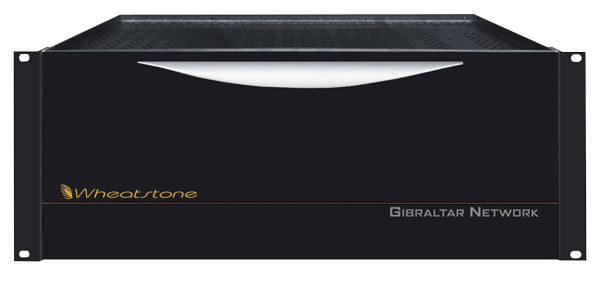

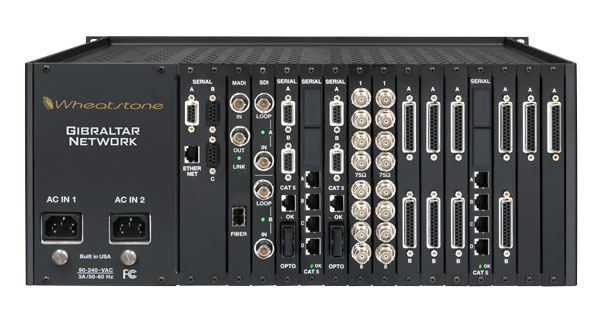
The Gibraltar Network Frame
This houses a family of cards that allows system access for virtually any audio source format and interface path: analog, digital AES (with sample rate convertors), MADI, SDI de-embedding, and control surface mix engine cards. There’s even an audio-to-ethernet portal that provides single wire integration to station audio automation playback systems. The mix engine is integral to the router; therefore any input is available to any mix, and any input or mix is available to any output system wide—forming a true router-based network system.
This can provide virtually any type of mechanical interface most suited to your application. Interface modules simply plug in from behind to provide RJ, DB, BNC or screw terminal connections.
Click to learn more about the Gibraltar Network Frame
XLR Interface Panel
Wheatstone makes it easy to interface your audio gear. Pictured is an XLR panel that simply interfaces directly to a Gibraltar Network I/O cage via our standard DB connector.
The Core Switch
Connects up to 48 I/O Gibraltar Network frames, each capable of over 512 audio I/O paths. Because the frame’s audio cards are front loading, service can be performed in real time. A selection of cards provides translation from analog, digital, SDI, and MADI inputs or outputs. Naturally, redundant cards can stand ready in each frame for those applications where failure is simply not an option.
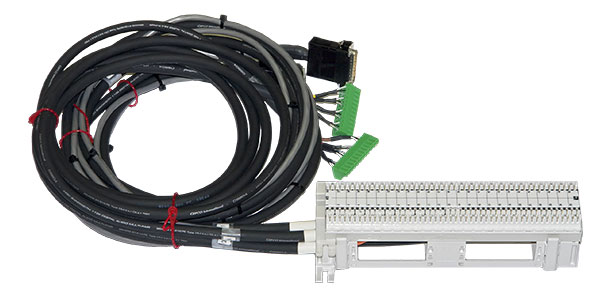
Prewire Assemblies
Wheatstone can even provide prewire assemblies from punchblocks (DB connector, plug-in screw terminals or simple pigtail).
Examples of Using the Gibraltar Network To Create a System
TV Studio Flow
Multiple television consoles can all share the same inputs and destinations as desired. Simpler systems can be easily designed by connecting two or more Gibraltar Network frames together directly without need of the core switch. And of course, systems can be built that include both radio and television surfaces as desired.
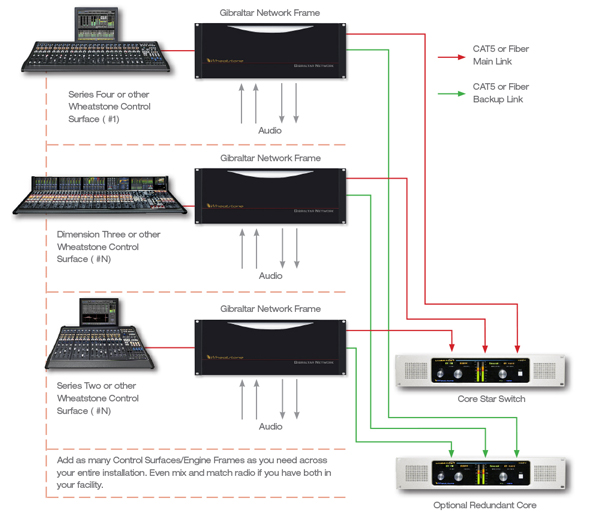
Benefits of Gibraltar
- Access any and all audio channels. The Gibraltar Network system can switch 3072 audio channels to 3072 destinations—all at once, virtually latency free, without blocking.
- Mix and match audio formats. Plug-in cards available for virtually any audio source format and interface path: analog, digital AES (with sample rate convertors), MADI, SDI de-embedding, and control surface mix engine cards.
- Get rid of the wires! 64 input channels and 64 output channels, plus associated control and synchronization data can all be sent down one Ethernet cable.
- Integrate automation with routing. An audio-to-Ethernet portal provides single wire integration to station audio automation playback systems.
- Get more done with this true router-based network. The Gibraltar Network Cage houses the mix engine, which is integral to the router, therefore any input is available to any mix, and any input or mix is available to any output system-wide—forming a true router-based network system.
- Double up on redundancy. A pair of Gibraltar Network Cage or Gibraltar IP Mix Engine units gives 100% glitchless, system-wide redundancy—a feat that cannot be guaranteed with similar systems.
- Interconnect it all into one network. The core switch can connect to 48 I/O mix engine frames, each capable of over 512 audio I/O paths.
- Service in real-time. Because the frame’s audio cards are front loading, service can be performed in real time.
- Select only the inputs/outputs you need. Gibraltar Network cards come in analog, digital, SDI, and MADI inputs or outputs.
- Network existing devices or new devices. The Gibraltar Netwok card frame can provide virtually any type of interface most suited to your application. Interface modules simply plug in from behind to provide RJ, DB, BNC or screw terminal connections.
- Expand as you go, from a simple Gibraltar Network router to a large distributed system with thousands of I/O and logic ports. The same cards are used in the satellite cages as the larger router cages for flexibility.
- Simplify installation. Plug-in modules, standardized cards and easy-to-navigate interface make setup a snap.
- Get the proven reliability backed by the Wheatstone brand.
Gibraltar Architecture
Wheatstone Gibraltar Network systems provide tried-and-true audio I/O routing, mixing, and audio networking in a flexible expandable system that can easily grow to over 3,000 x 3,000 crosspoints.
The WheatNet® Switch ties it all together, as a central switch for your studio and TOC racks. Multiple-level redundancy is a hallmark of the Gibraltar Network audio networking architecture: redundant system and control surface CPUs, redundant DSPs, and redundant Gibraltar Network chassis with dual Cat-5 links from each I/O frame can provide full redundancy with automatic switchover.
“Any signal anywhere.” Sounds simple enough, but designing a digital audio network gets more complicated when you think about the requirements: enough non-blocking bandwidth between any two points in your entire system to transceive as many audio and logic signals as you require at any given time.
Wheatstone has been supplying large networked audio systems now for MANY years, with numerous installations comprised of a dozen or more studios. Our experience with these larger installations led us to develop WheatNet – a super high capacity audio network switch. We learned that busy engineers shouldn’t have to worry about bandwidth limitations and system capacity when planning a facility. WheatNet simplifies the process. It acts as the hub in a “hub and spoke” topology, and you simply plug your studio I/O frames into it.
Failsafe Redundancy
Wheatstone’s experience in designing audio consoles for all broadcast realms as well as pioneering networking comes together in the D-32. More power to handle modern needs with a user interface that is pure joy to get your hands on. And with Wheatstone’s built-in safeguards, you can rest assured that you’ll always be on the air...with or without fail.
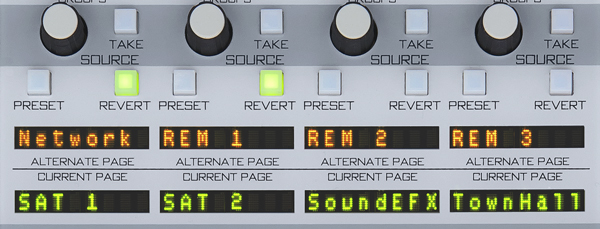
Redundant Sources
With ALTERNATE and CURRENT source selectors provided on each fader, if the primary feed goes silent, an operator need simply press the second source to recover audio. Because the system supports such a vast number of inputs, there’s room to provide these redundancies without the need for patching or external switching.
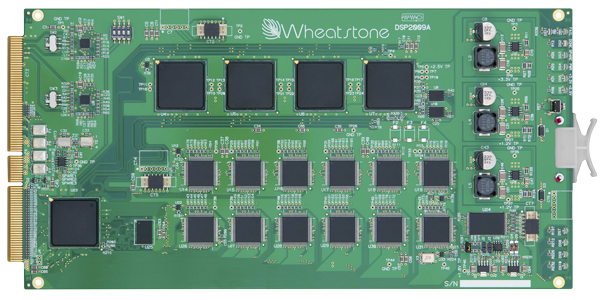
Redundant Components
If a DSP chip fails in a traditional console, it tends to take the entire card with it, leaving the board dead. Thus, having a backup DSP chip on the same card is not really a solution. With Wheatstone, a hot-spare DSP card can be utilized with automatic failover in the event of a problem with the primary engine. Because any source can be assigned to any fader, even catastrophic damage to a fader module on the console (as from a drink spill or falling object) only means that the damaged faders are out of action. The sources can be rerouted to other faders, and the show goes on.
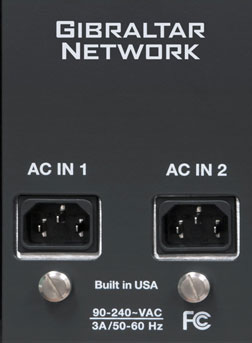
Redundant Power
Gibraltar IP Mix Engine and Gibraltar Network Cage utilize internal modular power supplies and can accommodate up to two units for redundancy.


